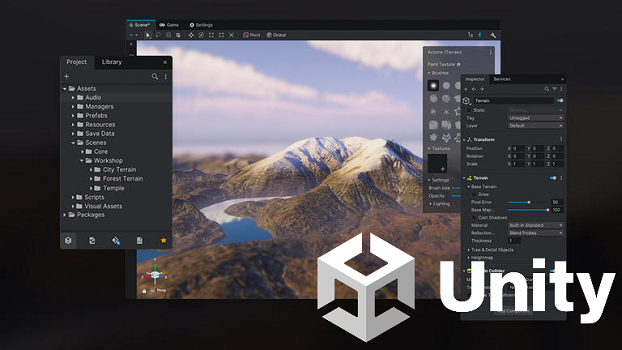Thinking About The Metaverse

What is the Metaverse?
Everyone keeps talking about the digital future, pointing to one goal: the Metaverse. Facebook’s rebrand to Meta put this concept at the forefront of consumers, but what does it mean? The beauty of the Metaverse is that it is not just one thing. Think about the Internet now; it is filled with tons of different digital touchpoints to have a place for any and everyone. The Metaverse may become more defined as we progress, but we are still learning about digital capabilities for now. The best way to think about the Metaverse right now is a digital place where people can do business, learn and communicate through their digital avatars.
When any new technology is born, it seems like it goes through two stages: what can it do and what should it do? At first, we are just so blown away by the technological advances that we test the various abilities. Then, we innovate to solve a problem or focus on the potential for the product to integrate into society beyond just being a new, intriguing tool. There will always be the next new thing, so you have to think about the best uses for what is available. According to a Wall Street Journal article, “The Metaverse concept is rooted in science-fiction novels like ‘Snow Crash’ and ‘Ready Player One.’ In the latter, the world has been ravaged by climate change and a fossil-fuel crisis, and the Metaverse is an escape.” It seems like the Metaverse was even more well-received following the start of the pandemic because we found ourselves limited in interaction and pushed online to stay connected. Community is essential for people, and the Metaverse forms an intersection of connecting people worldwide and virtual reality technology.

So, where do we start?
Although this seems like a foreign concept, the beginning stages of the Metaverse can be seen all around us. From Pokemon Go to Snapchat filters, we already use technology that allows augmented reality to overlay virtual objects onto the users’ surroundings. However, it is important to note that the Metaverse is often mistaken for virtual reality, where virtual reality is merely a way to experience the Metaverse. So, how will the Metaverse begin? Snapchat introduced Geofilters in 2014 and lenses in 2015; these both overlay digital images or filters to change the users’ appearance or surroundings. A year later, Pokemon Go was released and “used GPS data and the mobile device’s camera to create an ‘augmented reality’ that allowed users to capture Pokémon from real-life locations,” according to Britannica. That same year in 2016, Snapchat acquired Bitstrips, which created bitmojis, and launched bitmojis within the app. If you want to read more on Bitmojis, a Forbes article does a great job of explaining why they are so popular. Even though the article was written in 2016, it proves why the Metaverse will be a significant evolution of the Internet because people want this kind of virtual interaction and connection. It seems like Instagram is following its usual pattern by copying Snapchat (think implementing Instagram stories) with its new Instagram avatars feature as of February 2022. The Head of Instagram, Adam Mosseri, was quoted saying, “Avatars are a key building block for the future of personal identity in the metaverse.” There have also been multiple in-game concerts that could be accessed in Roblox, Fortnite or Minecraft. To try and understand how popular these events are, the Ariana Grande Fortnite concert was attended by 27.7 million unique users and 12.3 million concurrent access players. The company behind Fortnite, Epic Games, reported that over 27.7 million players participated in the multiple Travis Scott in-game concerts live. There were 45.8 million views for the events, meaning that many players attended at least twice.

Who will shape the experience?
It seems like virtual reality headsets will be the primary way to experience the Metaverse because of their immersive capabilities; however, there may be entry points using phones and computers. As we are seeing currently, no one company will control the entirety of the Metaverse. Instead, various tech giants and video game companies will create different experiences within the overarching technology. A Wall Street Journal article explained that “Meta sells Oculus-branded augmented- and virtual-reality headsets, while Snap Inc and Microsoft offer augmented-reality glasses designed for consumers and businesses, respectively. More ways to enter the Metaverse are in the works.” Along with these brands, I also think Matterport, Roblox and Unity Software will be key players in creating and leading the Metaverse charge.
Matterport
Matterport describes itself as “the world’s leading spatial data platform” on its website. Matterport virtual reality technology gives people the capability to take their buildings online to “design, build, promote, and manage your most valuable asset at your fingertips.” Matterport has scanned more immersive 3D tours than any other solution. “Since 2011, we have focused on honing the immersive 3D experience for everyone from individuals to Fortune 500 companies, located in more than 150 countries. Matterport has helped hundreds of thousands of customers – and thousands of their customers – process billions of images to create millions of models.” The technological ability to create realistic 3D modeling of any building would allow people to merge their existing realities and new virtual possibilities.

Roblox
Roblox reimagined Legos in a digital world. They crafted a digital environment based on agency to create and communicate. “Craig Donato, the chief business officer at Roblox, told Emerging Tech Brew that part of what makes Roblox successful is its bottom-up reliance on the creator community, which develops all of the experiences found in-game, which can range from DJing a party to playing a game of cops and robbers. ‘Our job is simply to enable creators to pursue their vision,’ Donato said. ‘The good news for us is if we have nine, 10 million people building on our platform, that tends to work itself out.’ The company is focused on adapting for the consumer; “Donato emphasized that metaverse experiences need to be both ‘immersive and social,’ in other words: able to transport players into the world, while also giving them avenues to explore those worlds with their friends.” Although it does have a primarily younger audience, this generation will be the early adopters of the Metaverse because the technology will come naturally to them.

Unity Software
According to Seeking Alpha, “Unity Software is uniquely positioned to monetize the metaverse megatrend with its leading game engine and Weta Digital acquisition. The rise of the Metaverse should generate new revenue streams for the company to build digital infrastructure beyond the gaming vertical. In addition, Unity is also well positioned to participate in the NFT economy.” So, what does Unity do? “In the beginning, the company’s game engine was focused on creating free-to-play mobile titles monetized via ads. Later, the game engine was enhanced to serve customers interested in building 3D content outside of gaming. Today, Unity is the world’s leading platform for creating and operating interactive, real-time 3D content, serving game developers and other creators.” The acquisition of Weta was highly strategic for Unity because Weta’s core business is creating VFX in film or digital images on screen. “Weta’s tools could help Unity expand beyond its dominant position in gaming, targeting new verticals such as NFTs, film production, CAD, and e-commerce.”

Okay, this sounds great, but there have to be concerns.
The Wall Street Journal sums up the concerns perfectly: “Some experts are concerned about privacy and security in the Metaverse. Others are worried about users’ mental health and the potential for people to prefer the virtual world over the real world and end up neglecting their real-life needs.” This article from Richard Wee Chambers touches on five potential legal issues the Metaverse may face: data privacy, intellectual property, anti-money laundering and knowing-your-customer (KYC), ownership of property and human rights and legal duties towards users. The Marketing Dive also wrote a great piece about concerns with brands and bad actors in the Metaverse. Dirk van Ginkel, Jam3’s executive creative director, told the Marketing Dive: “What is interesting about web3, the communities that are engaged with it are a lot more gated. So a good example is, for instance, if you want to launch an NFT for brands, there’s generally a discord that comes along with it. And those communities can shoot down a discord as well. So the community is a lot more in control as to what’s happening.” However, this still raises questions about regulations such as who will regulate and if self-regulation is possible. One possible solution that has been presented is the idea of smart contracts. “These are programs that are stored in the blockchain that only activate under certain conditions. If the conditions of the smart contract are violated, the program fails to run. If brands built certain rules around decorum and behavior into a mandatory smart contract before selling someone an NFT or allowing them entrance into a virtual space, they may be able to keep themselves safe.”
The Metaverse in its complete form is at least a few years out. None of the Metaverse touchpoints currently connect with each other; interconnectivity will be vital to adoption. It will be fascinating to see how Web3 develops and changes how we approach the digital world. How do you think the Metaverse will look?
More About The Author
Lia Esposito is a senior at the University of North Carolina at Chapel Hill pursuing a degree in Media and Journalism concentrating in Advertising and Public Relations with an English Minor. She is currently a social media strategist in the fintech industry.